-
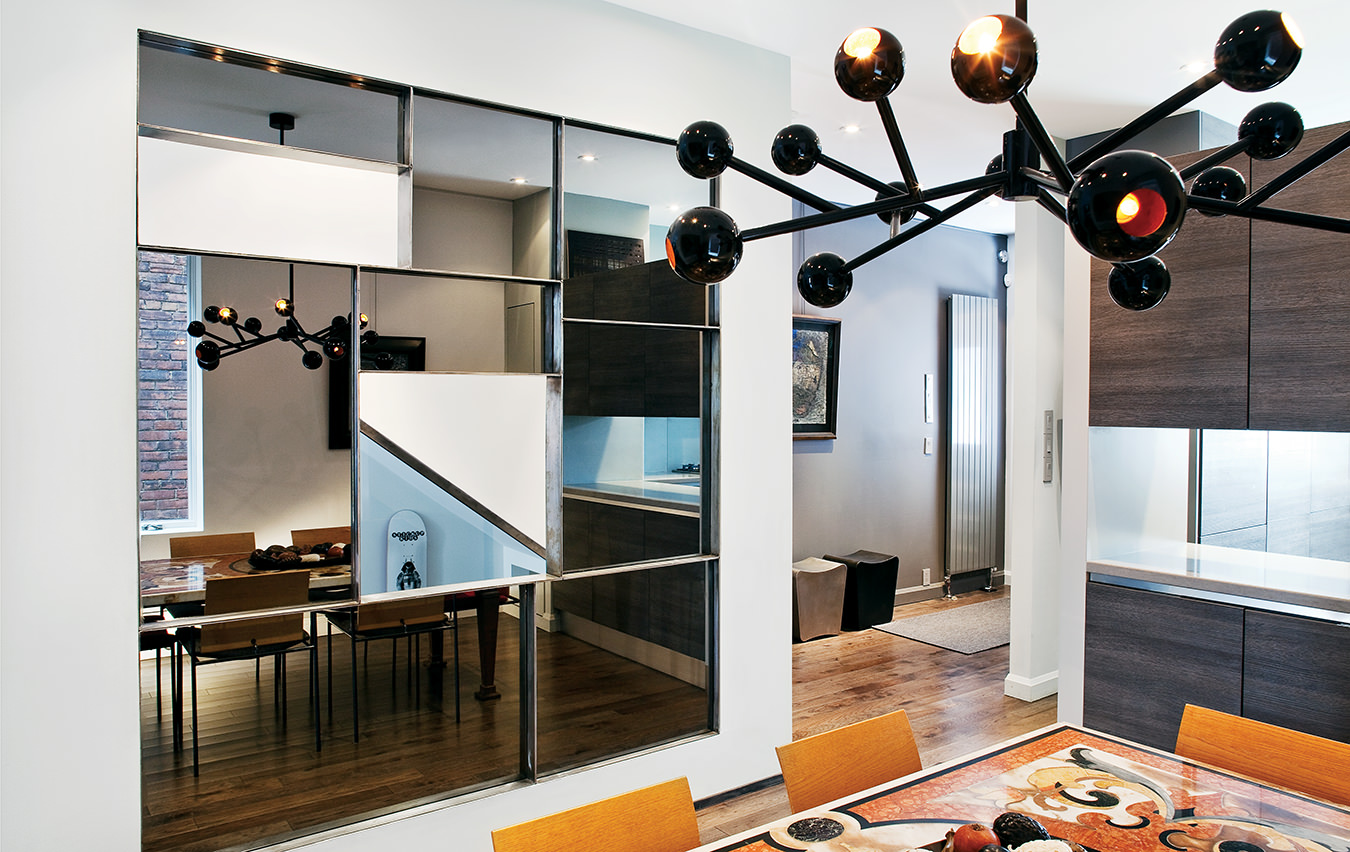
Françoise Turner-Larcade’s kitchen includes a restored 18th-century Italian altar in marble marquetry, a Damien Langlois-Meurinne chandelier, and mirrors of her own design.
-
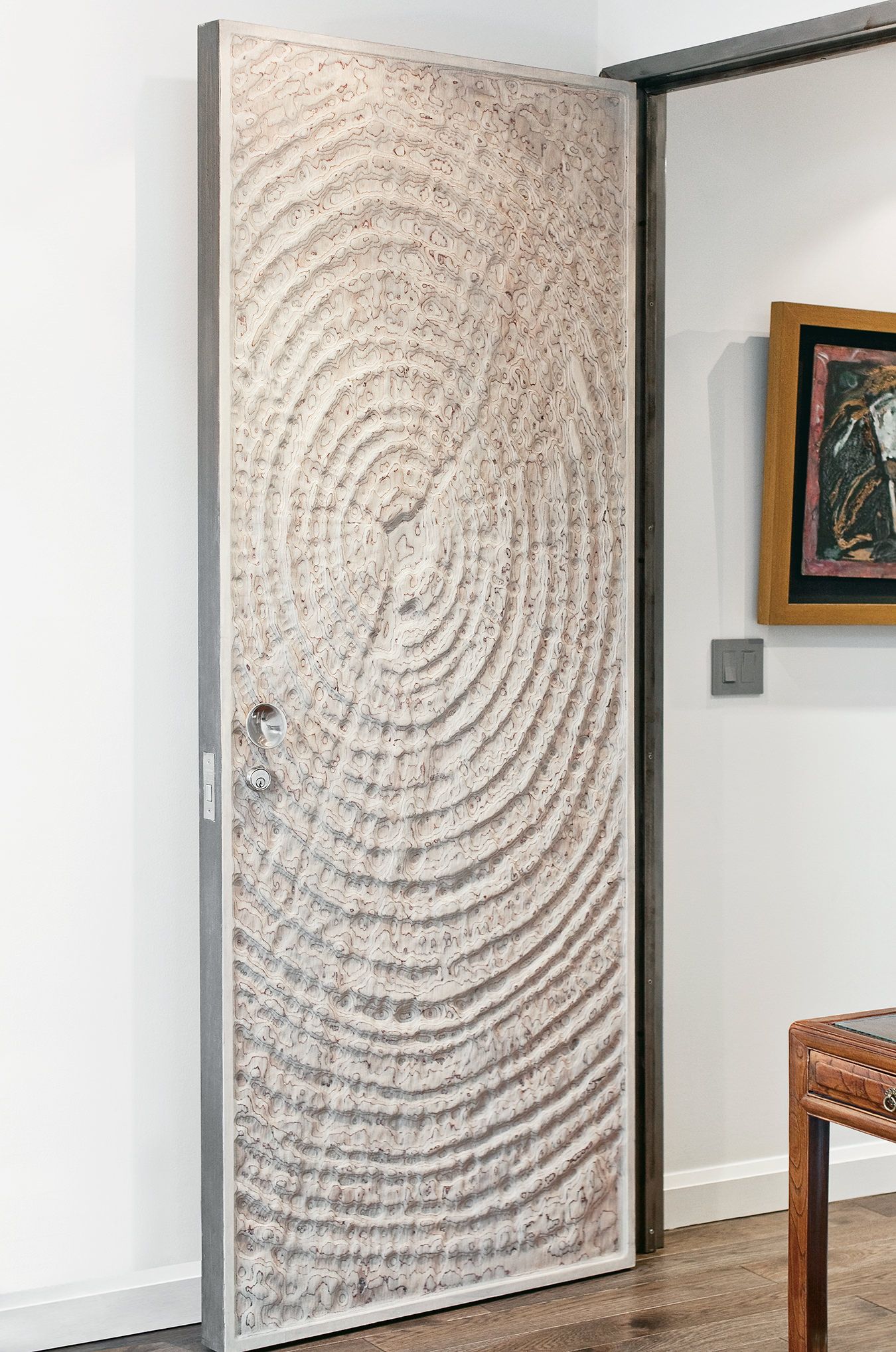
A Françoise Turner-Larcade and Scott Eunson custom sculpted door.
-
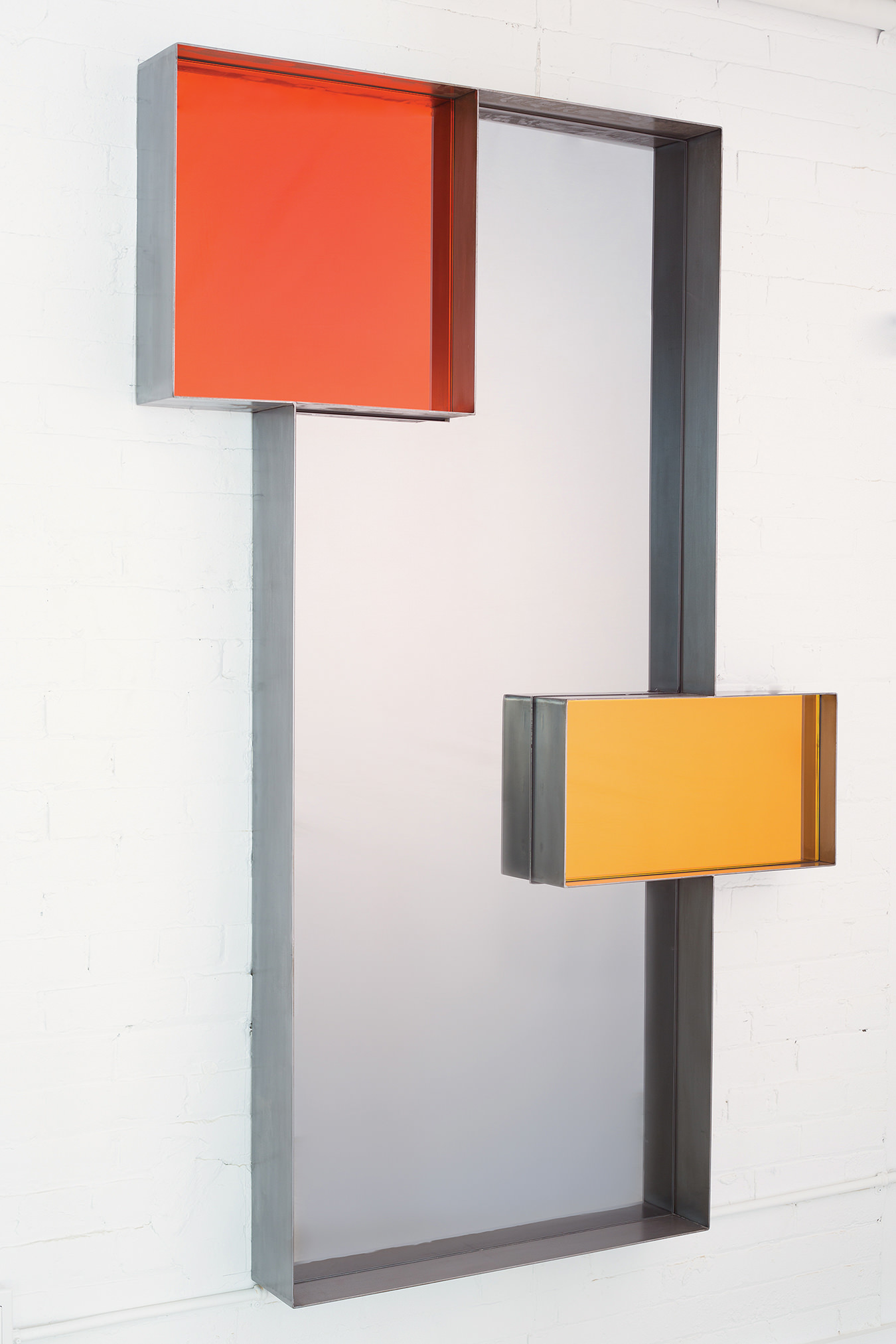
Françoise Turner-Larcade’s unique coloured, steel-framed mirror.
-
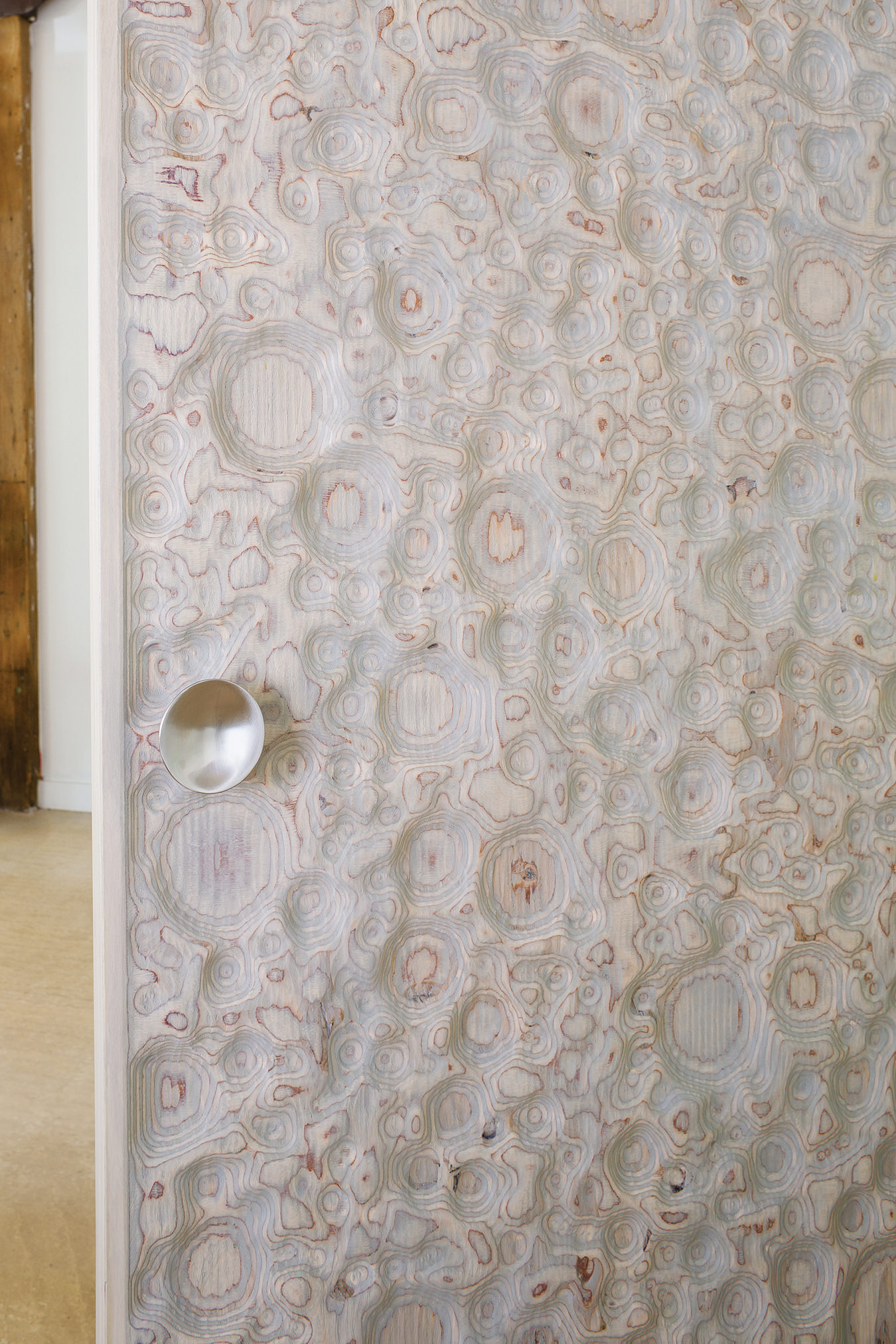
A sculpted door, designed byFrançoise Turner-Larcade and Scott Eunson.
-
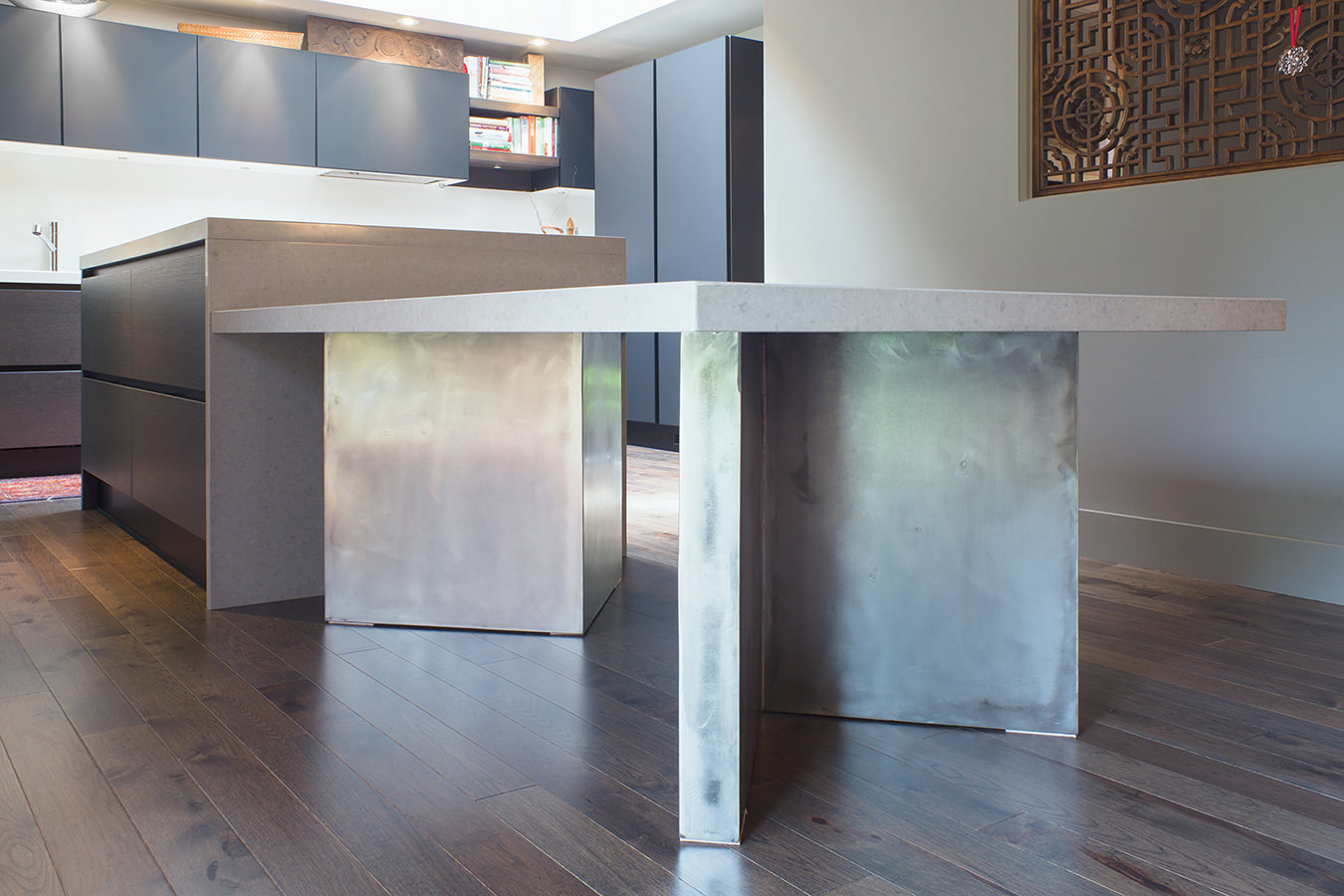
A Scavolini kitchen renovation project, featuring hickory hardwood floor and a steel Caesarstone table, the base custom-made and designed by Françoise Turner-Larcade.
-
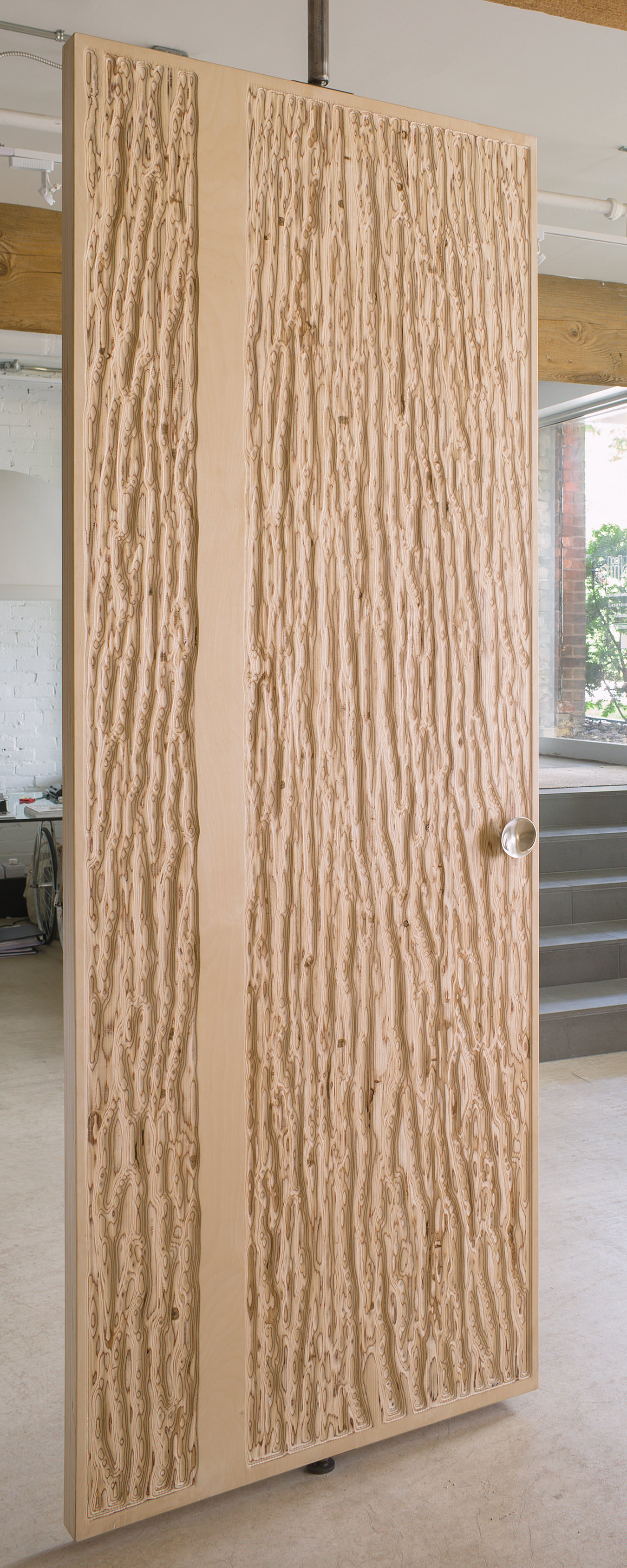
A sculpted door designed by Scott Eunson and Françoise Turner-Larcade. The flat section allows room to engrave logos or numbers.
-
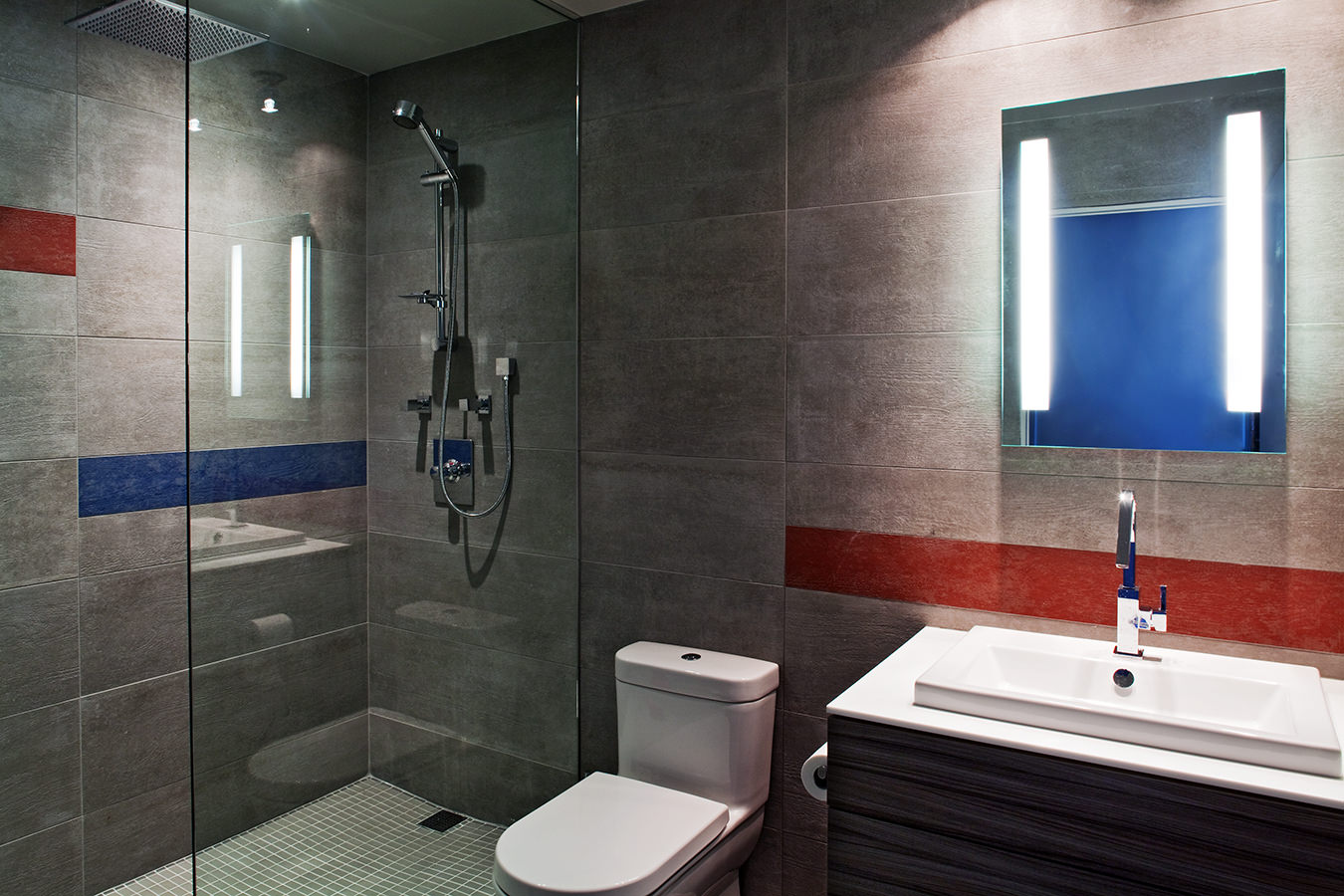
A renovation project for a guest bathroom. Interior design by Françoise Turner-Larcade, with tiles from Stone Tile, Duravit Philippe Starck fixtures, and a LightForm mirror.
-
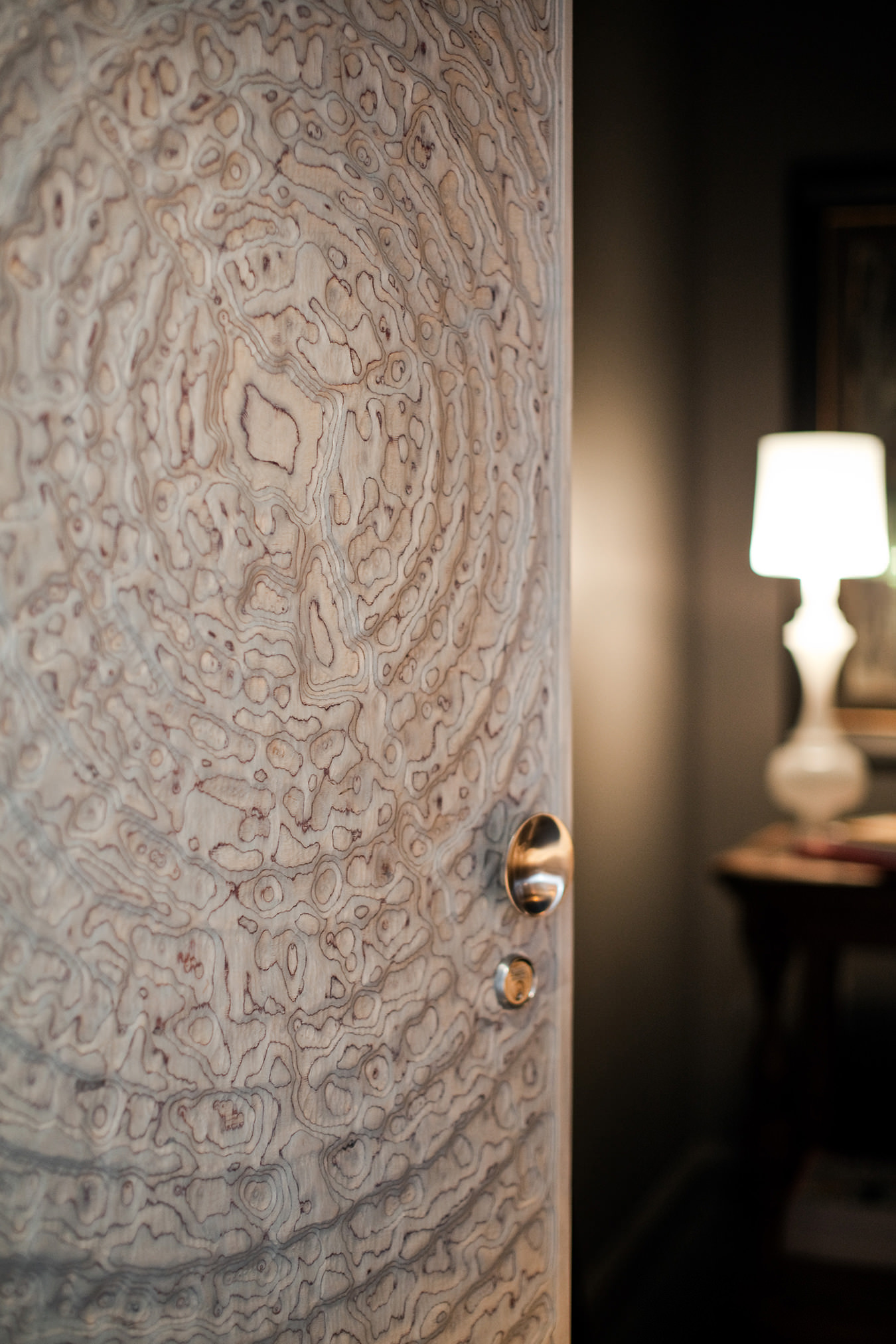
A sculpted door designed by Scott Eunson and Françoise Turner-Larcade, with hardware by Du Verre.
-
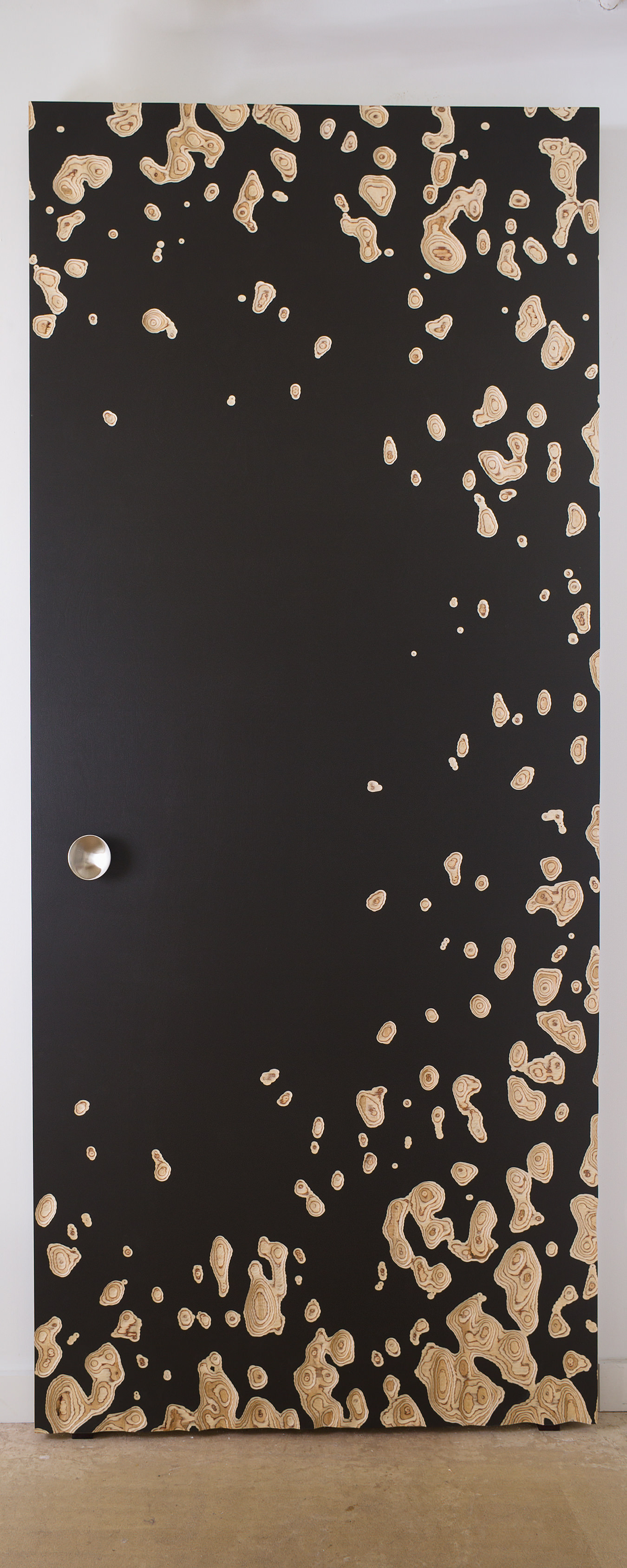
A sculpted pattern on a painted door panel, designed by Scott Eunson and Françoise Turner-Larcade, with hardware by Du Verre.
Françoise Turner-Larcade
Making an entrance.
When Françoise Turner-Larcade was growing up in Paris, she wanted to be an archeologist. She was an only child—and despite her parents’ Bohemian leanings, they said no. “They didn’t think it was a good career move,” recalls the French-born, Toronto-based designer, who went on to get a degree in public relations from the École Française des Attachés de Presse. In 1973, soon after graduating, Turner-Larcade founded her own communications company. Her clients, significantly, were all in the arts—gallerists, their painters, and an assortment of Paris-based publishers. She did well, but her fascination with ancient civilizations never died.
Today the interior designer, who has clients across North America and in her native France, routinely digs into the distant past when creating contemporary living spaces in which the old and the new are elegantly balanced. Her own home, located in Toronto’s hippie chic Annex neighbourhood, is an example. The century-old, red-brick detached house (which Turner-Larcade gutted and renovated herself after purchasing it as a postdivorce project two years ago) is a mix of antique sculpture and modern, colour-rich furniture, primitive African masks and sparkling French crystal, whimsical Ikea rugs, and priceless works of art, such as the 16th-century altarpiece handed down to her by her parents. It’s a sensibility born of a genuine passion for time-honoured design. “I’ve always been fascinated by long-ago times and places,” says Turner-Larcade one rainy fall evening in her dining room. “I was exposed very young to art and to museums,” says the 59-year-old designer.
Over time, Turner-Larcade says that, in addition to archeology, she has developed a concomitant interest in what she calls cosmic symbolism, or design with hidden meanings—another link to past civilizations. “I am interested in how we react when we are faced with symbols, whether as a shape or an objet d’art created to make us think of worlds beyond our own,” she says. “I really think how we react is motivated by the collective unconscious, which is rooted in our ancient past. What came before informs who we are today.”
Turner-Larcade knows precisely where her influences lie: an old abbey in Southern France. Her parents were friends with the family who owned the property, and she spent her summers there, growing close to a little boy, the proprietors’ grandson. Together they played in hallways hanging with medieval tapestries, some of which were later donated to the Louvre. They used as a jungle gym ornate chairs that once belonged to King Henry II of France and his mistress, the esteemed courtier and noblewoman Diane de Poitiers. “Of course, I didn’t realize what I was climbing on at the time,” says Turner-Larcade, a peal of laughter following her words. “But this was just it: I was surrounded by precious objects at my most formative years. I touched them. I lived with them. They marked me, leaving a trace on my memory.”
She eventually married that little boy, following Dante Larcade in 2000 to Canada, where he ran Domain of Killien, a rustic but posh resort with a cordon bleu kitchen located near Haliburton, Ontario. (The 5,000-acre property, purchased in 1982 by Larcade’s aristocratic family, closed last year.) Their everyday life was in the city, where in 2002 the couple opened Roseland Gallery on Toronto’s Queen Street West, a combination art gallery and home-decor showroom specializing in antiques and limited-edition contemporary furniture that had been inspired by their shared childhood experiences surrounded by objects with impressive histories. “Every piece was meant to tell a story,” says Turner-Larcade. Before closing in 2010, two years after the couple’s fairy-tale marriage broke up, Roseland Gallery was where leading architects and designers came to shop, scooping up art objects and quirky furniture pieces like a Baay Xaaly Sene electric-blue chair made from discarded Shell oil cans. Non-industry types shopped there as well and often asked Turner-Larcade (whose self-designed Paris apartment near the Trocadéro was showcased in a 1991 issue of Architectural Digest) for decorating advice.
“It was a new life in a new land,” she says. But there were challenges. Torontonians like antiques, she says, but they are not as interested in provenance as she and many of her fellow Europeans are. “We grow up surrounded by tradition and a culture that is very old,” she explains. “In Europe, provenance is part of our patrimoine, and we easily mix antiques, which we usually inherit, with contemporary design, which is how we distinguish ourselves from our parents. But Toronto is different. Here, people don’t really care where a piece comes from. I think that is why photography does very well. It is a new medium which the market understands.”
“Doors, for me, are always an architectural element within the home which reveals the personality of the owner of the space,” says Turner-Larcade.
Infected by this spirit of the new, Turner-Larcade has several times reinvented herself since arriving in Canada 13 years ago. Once a diehard Parisian aching to return to the City of Light every six weeks, she has today made Toronto her home, finding stimulation in the city’s changing landscape and growing sophistication in terms of art and design. “It really is different from how it was 10 years ago,” she says. “Toronto always was cosmopolitan, but now it is international.”
Turner-Larcade is part of that shifting landscape, contributing art objects of her own, which are now sold through other people’s stores. Her “Fragmented Mirror” series, what she aptly describes as jewellery for the home, is made of raw steel and coloured pieces of reflective glass (sold through Toronto decor retailer Avenue Road). Typically rectangular in shape, with some pieces measuring up to eight feet in height, the mirrors embody Turner-Larcade’s belief that opposites, when combined in interior design, are attractive. “The metal is rough and grey, but the mirror is smooth and colourful as precious jewels,” she says. “But as with everything in life, harmony is important, and so I always balance strong colours with something neutral in order to produce a peaceful effect.”
Her latest project, launched this summer, consists of a line of sculpted wooden doors made with artist and designer Scott Eunson, a frequent collaborator of Yabu Pushelberg. His Scott Eunson Studio has created site-specific sculptural installations for commercial projects around the world, including the Four Seasons Hotel Tokyo at Marunouchi, the Printemps department store in Paris, chef Mark McEwan’s Bymark restaurant, and the Drake Hotel in Toronto. The doors, however, are Turner-Larcade’s idea.
She has long been enchanted by doors, having grown up with powerful and lasting examples of them in France, including Auguste Rodin’s monumental sculpted bronze doors, The Gates of Hell. This interest led Turner-Larcarde to commission a hand-sculpted door from Eunson, who she first met about a decade ago. (“Doors, for me, are always an architectural element within the home which reveals the personality of the owner of the space,” she says.)
Eunson and Turner-Larcade reconnected later in life, after she returned to Canada from working in Morocco, where she had also tried her hand at creating doors. Problematically, when she imported pieces to Toronto, the wood warped from the extreme Canadian weather conditions. So, Turner-Larcade got in contact with Eunson, who has a background in architecture, and told him of her dilemma. He suggested using plywood, which he sculpts by hand; it proved successful.
The duo’s door collaborations are available at Klaus in Toronto as custom-order items. Production is efficient now that Eunson is using a CNC router (a computer-controlled sculpting machine) to make the patterns, which include snail-shell curlicues and water-like ripples that display the contours and grain hidden inside the layers when carved into the wood.
Doors were symbolic for the ancients; they were the sculpted sentries that guarded the secrets of temples. Turner-Larcade wants to bring back the status that doors once held and get people thinking again about how doors are thresholds into new worlds. “Doors are special wherever you go: Africa, Japan, Russia, Europe, and also the Bible, which speaks of the gates of Jericho,” she says. The archeologist in her has finally broken through.




